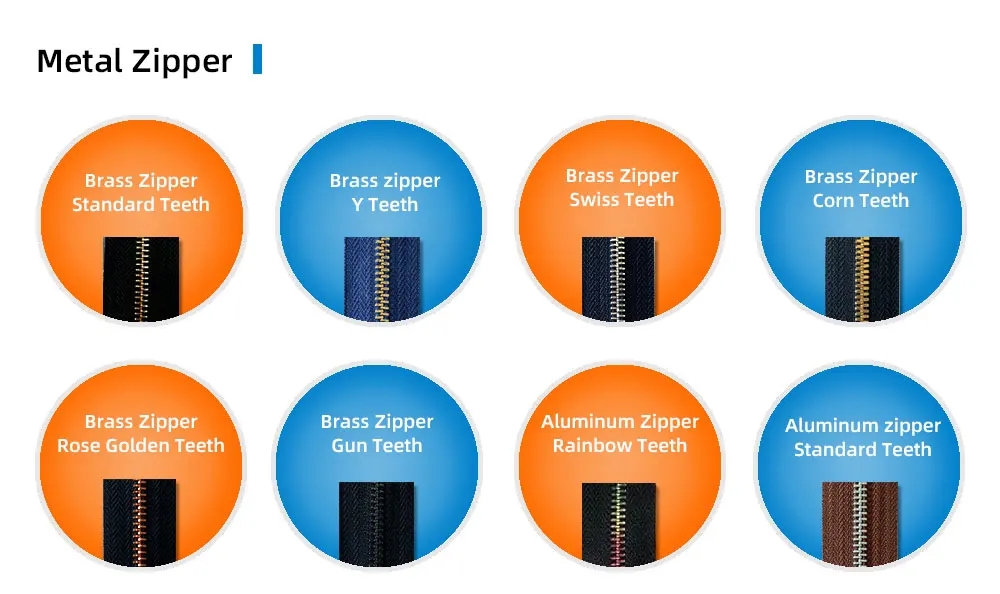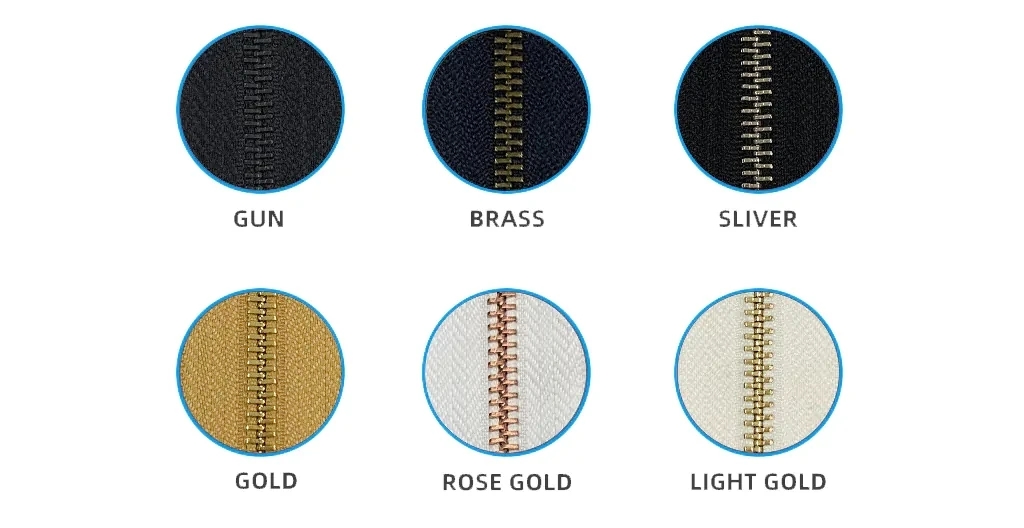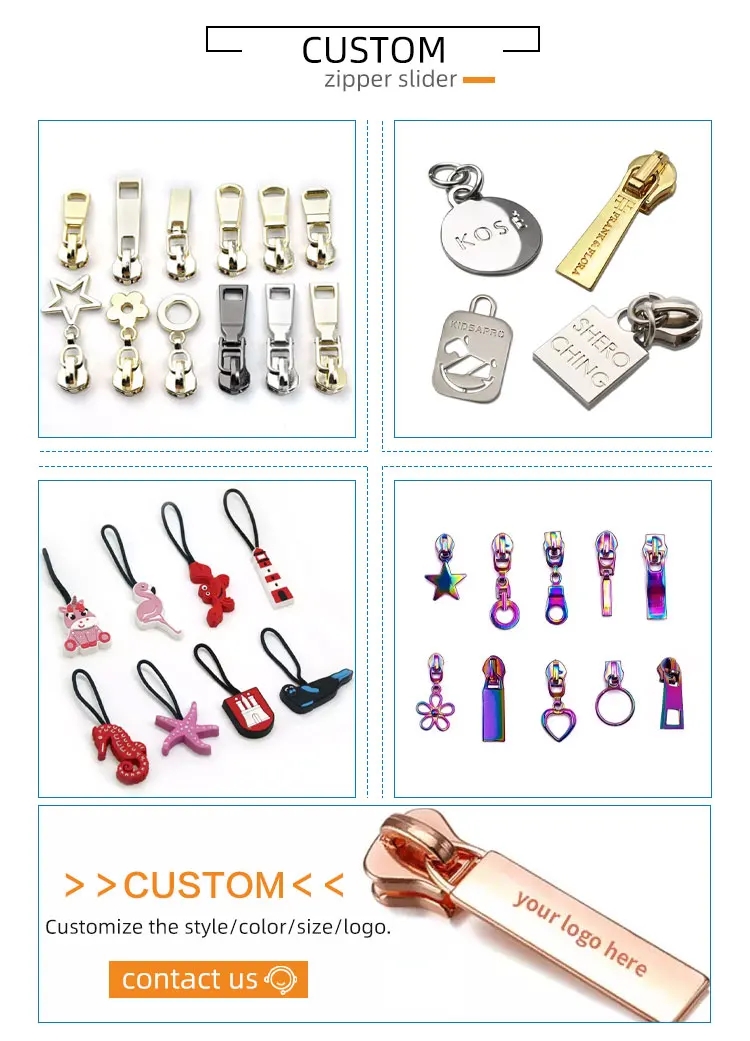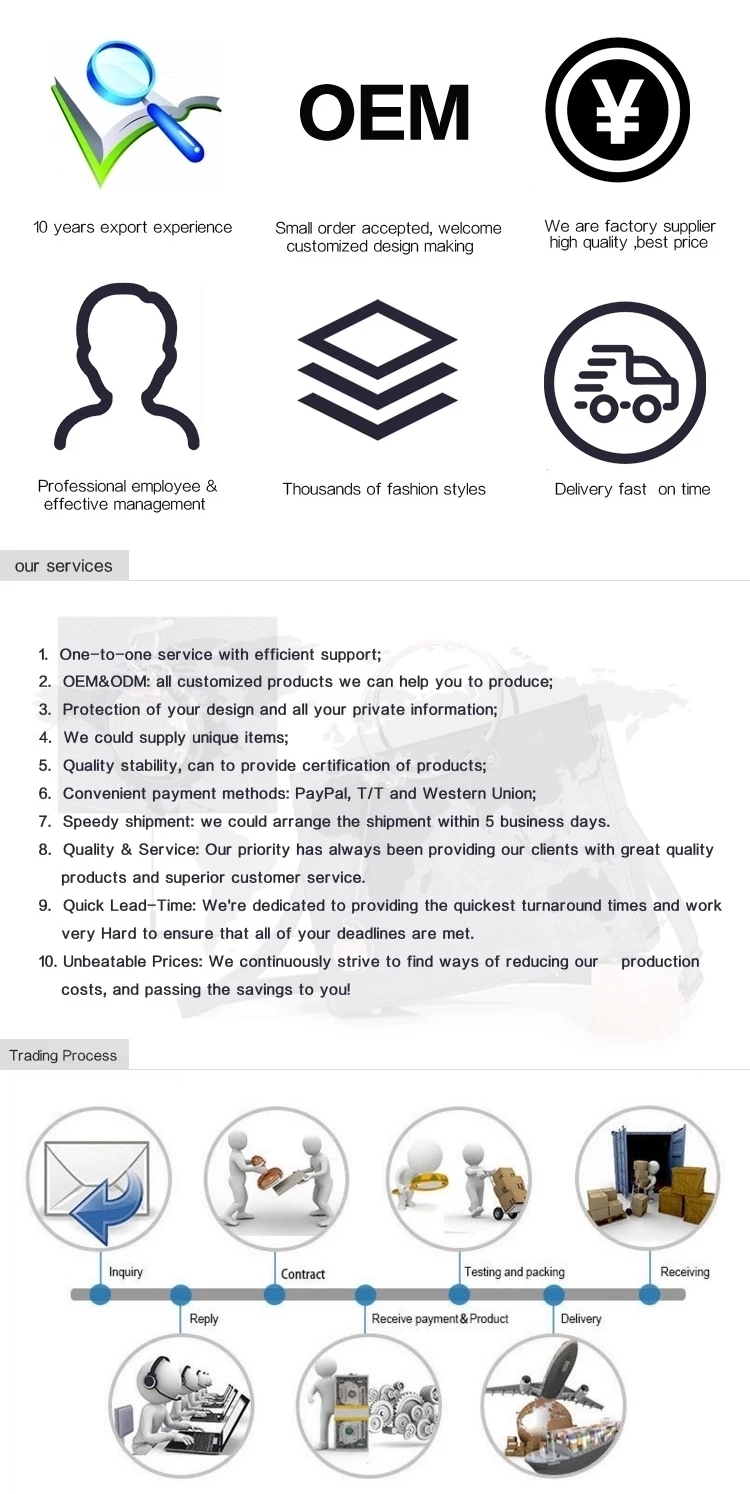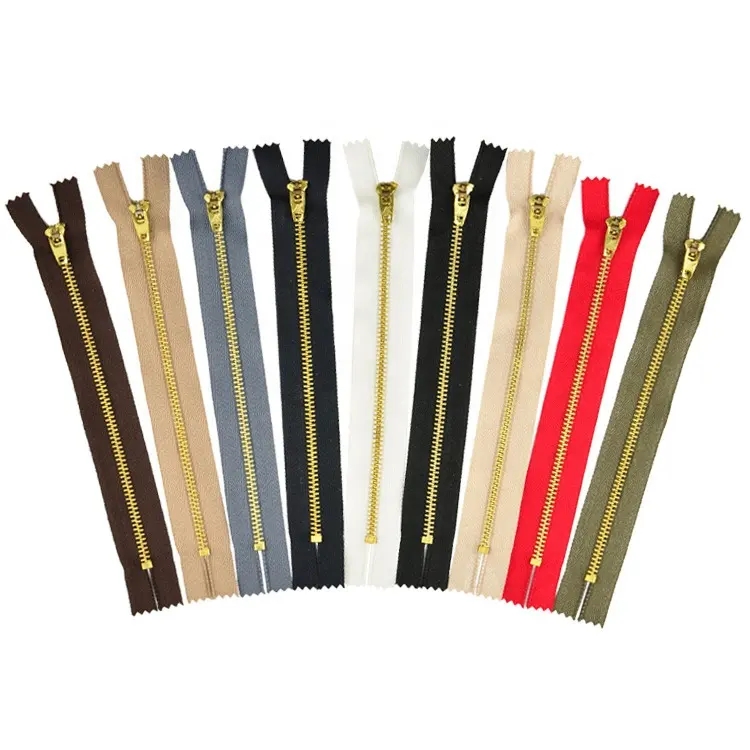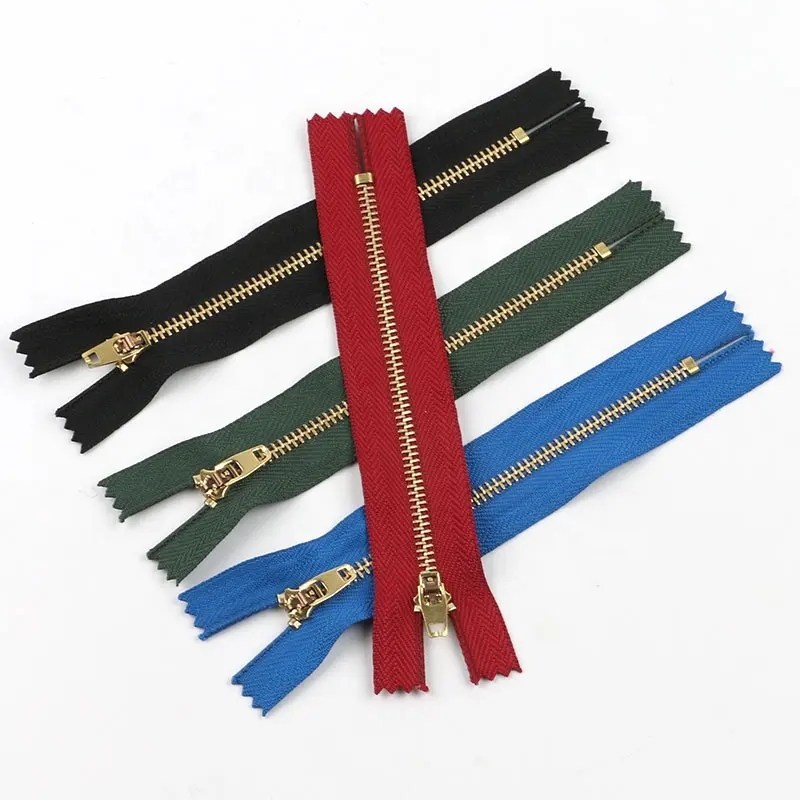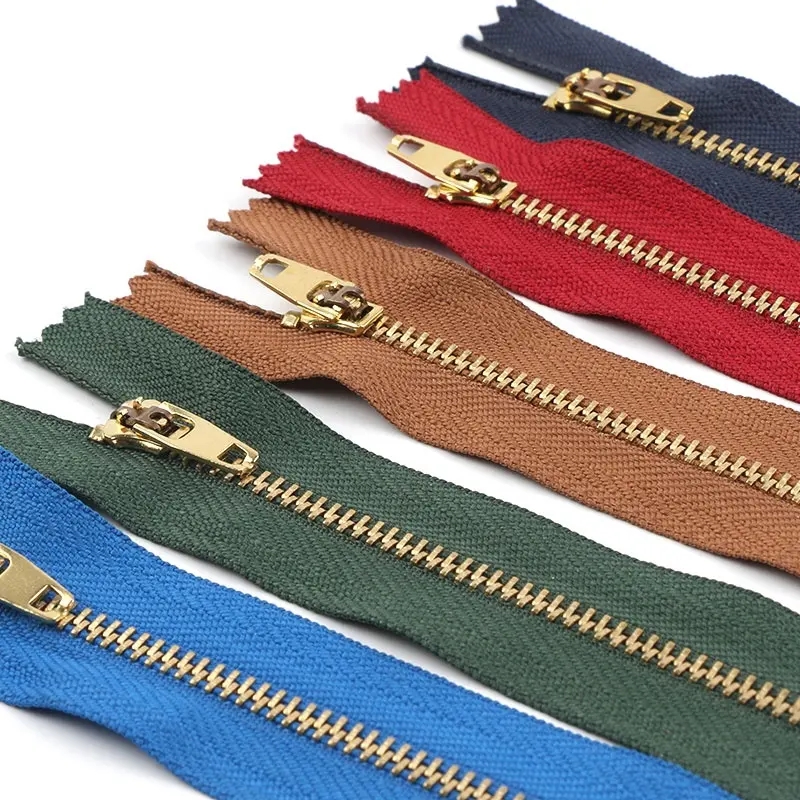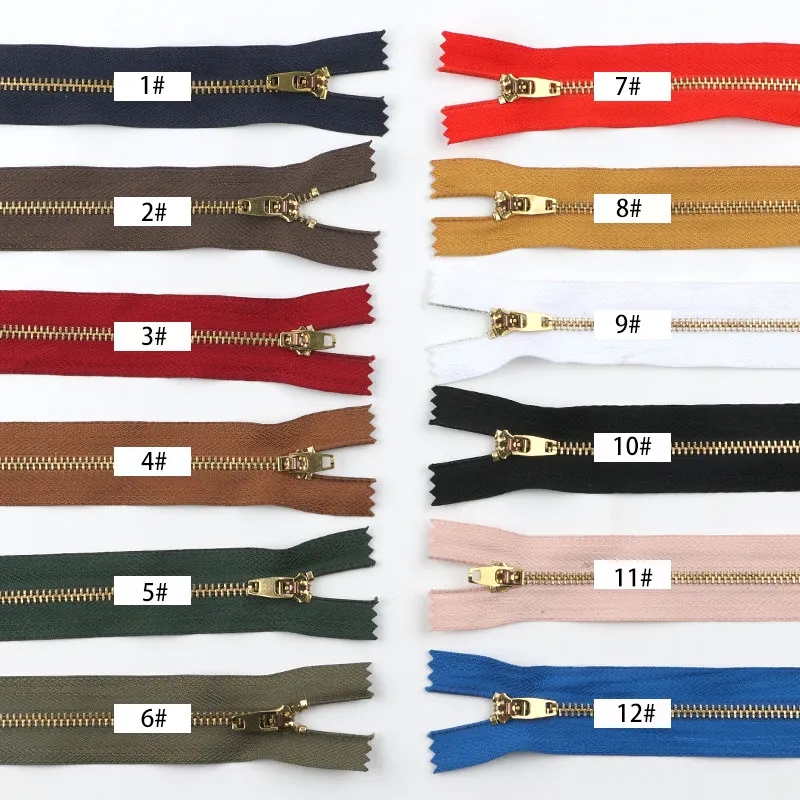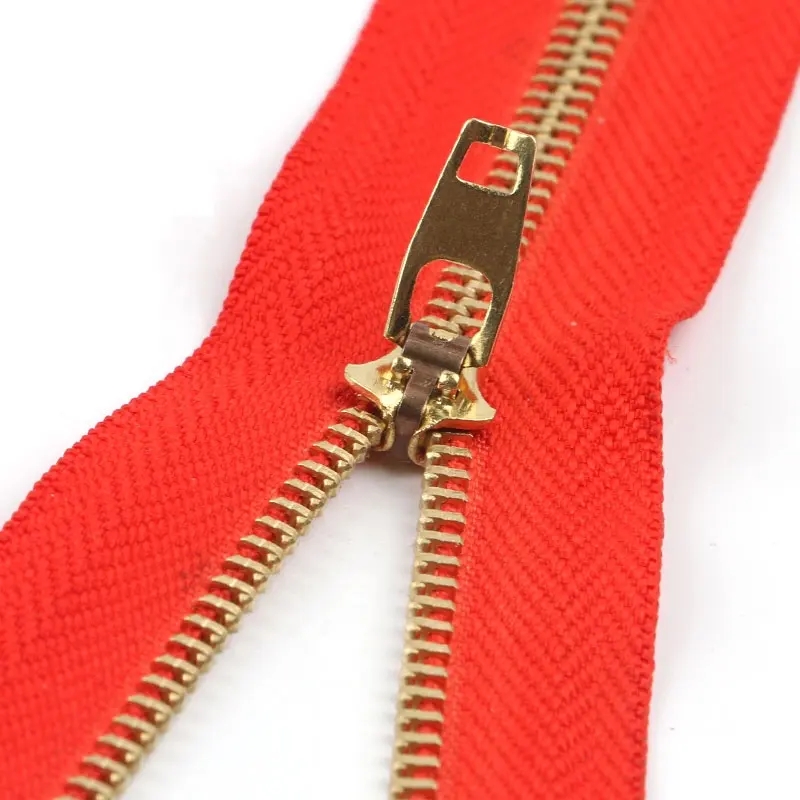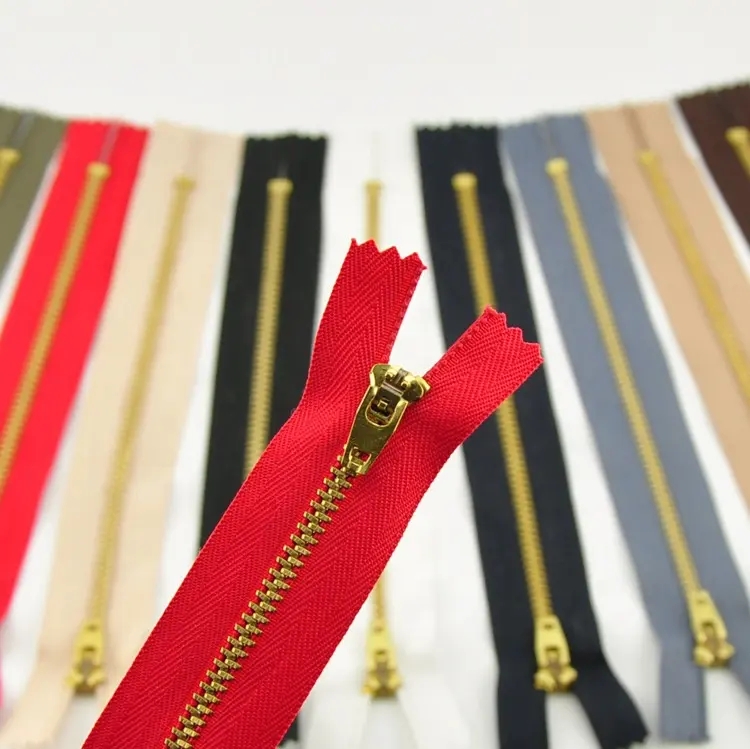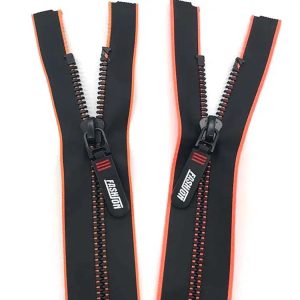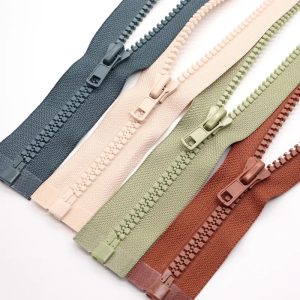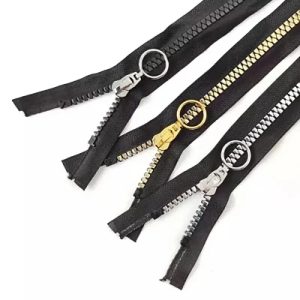There are several packaging methods for metal zippers:
- Plastic Bag Packaging: The simplest method involves placing the metal zippers in plastic bags and sealing them. This approach suits bulk quantities of standard zippers.
- Box Packaging: Metal zippers are placed in custom-designed boxes, often with labels displaying brand information or product details. This packaging method is common for mid-range to high-end products.
- Roll Packaging: Zippers are rolled up, potentially secured with strings or plastic bands, and then placed in customized boxes or pouches. This method is often used for specially customized or length-specific zippers.
- Customized Packaging: Some customers may require special packaging, such as transparent boxes or uniquely designed packaging to highlight product individuality and brand.
- Bulk Packaging: For wholesale purposes, multiple metal zippers might be bundled together and then secured and sealed using plastic wrapping or other methods.
Different packaging methods are chosen based on product nature, customer requirements, and brand positioning to ensure proper protection during display and transportation while showcasing the product’s best appearance.
Metal zippers are commonly made from several materials:
- Brass: Brass is a popular material for metal zippers, known for its corrosion resistance and strength. Its golden appearance makes it an ideal choice for high-end products.
- Aluminum Alloy: Lightweight and durable, aluminum alloy zippers are often used in outdoor clothing and sporting goods due to their rust resistance.
- Stainless Steel: Stainless steel zippers offer excellent corrosion resistance and strength, suitable for industrial products or garments required to withstand harsh conditions.
- Zinc Alloy: Zinc alloy zippers are frequently utilized in fashion accessories. They are lightweight and highly malleable, allowing for various styles and designs.
Each of these materials possesses distinct characteristics, resulting in different properties of the metal zippers manufactured from them. The choice of the appropriate material depends on the intended use of the product, environmental conditions, and aesthetic preferences.
